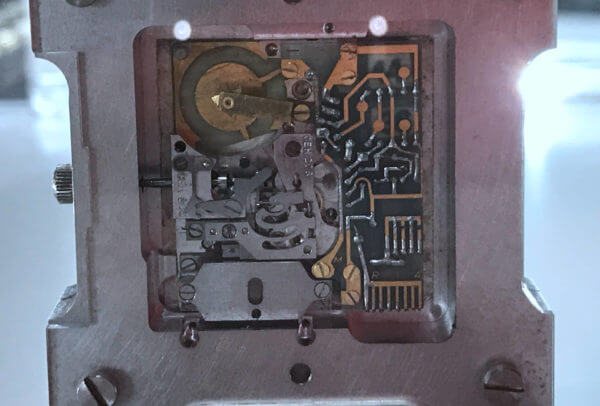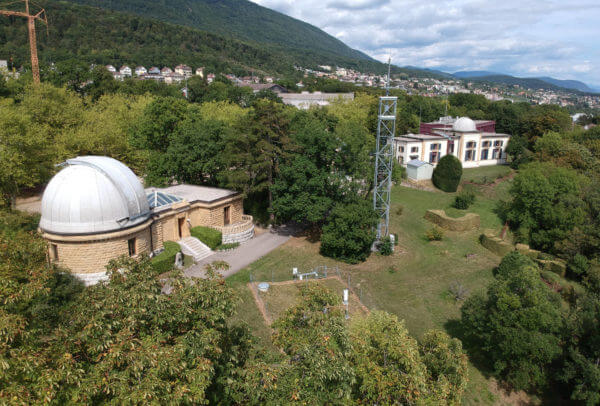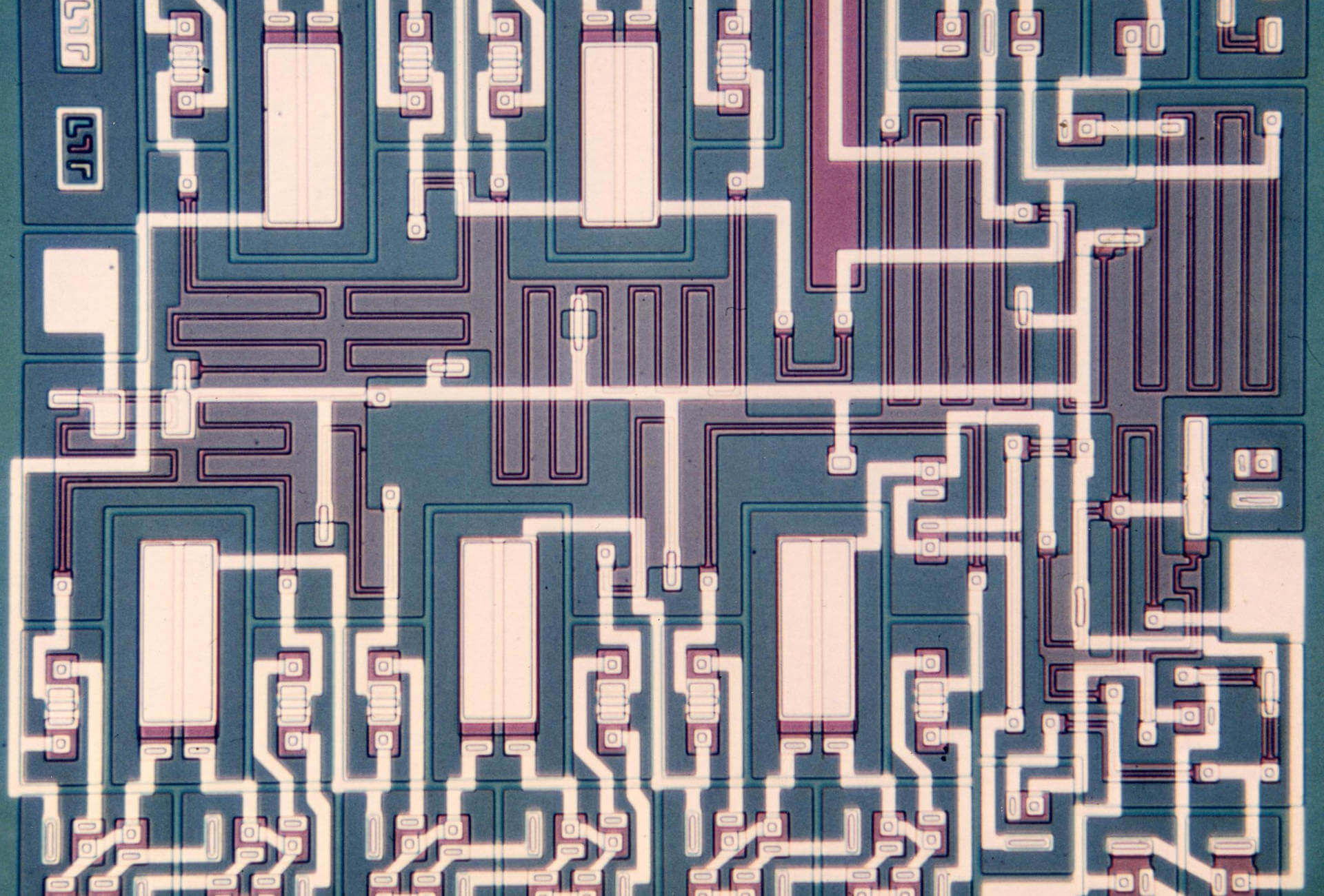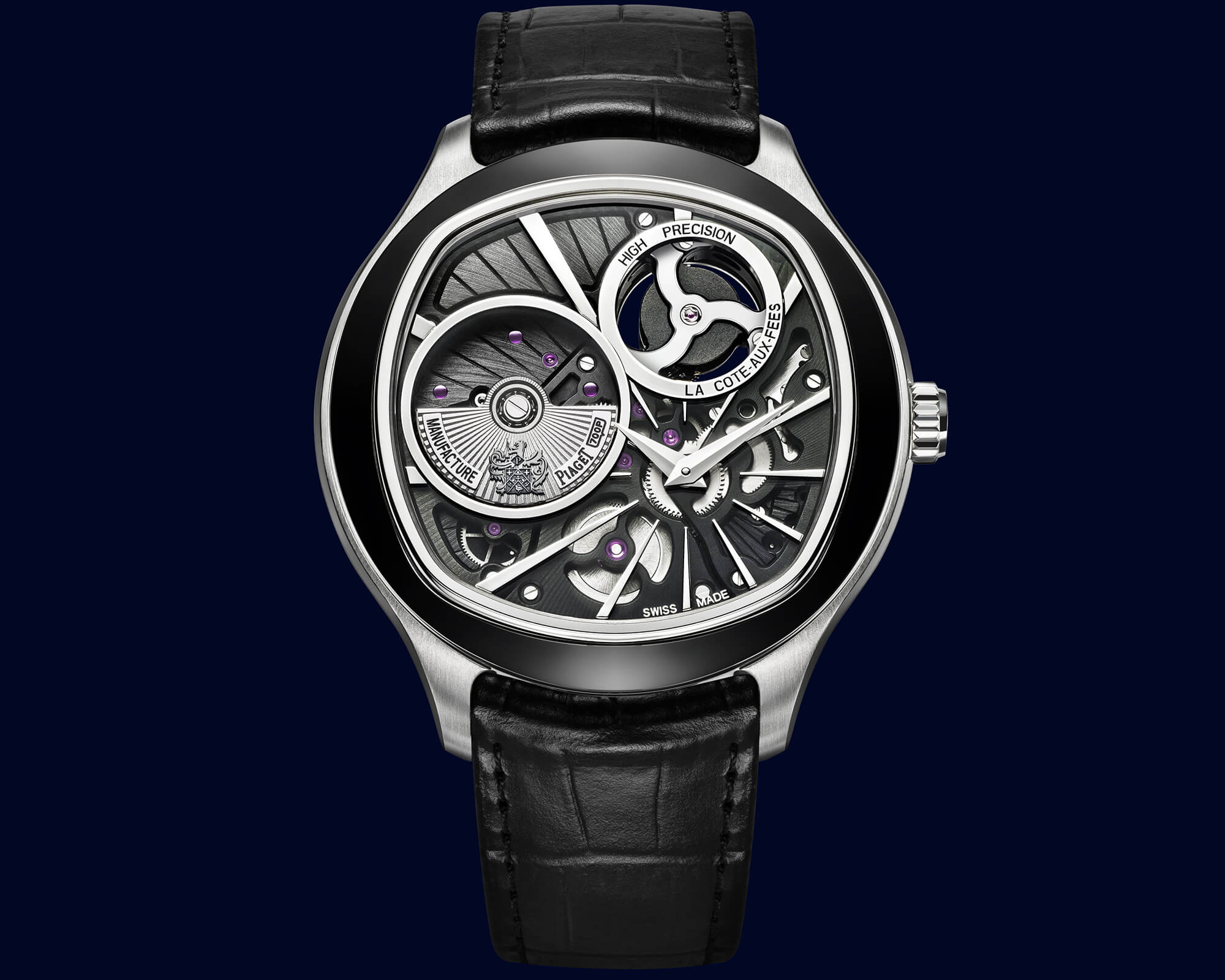The launch of Bulova’s Accutron (ACCUracy through elecTRONic) in 1960 was a strong signal that big changes in the field of portable timekeeping were in the air. The American company had based its electronic watch on a principle invented by the Swiss engineer Max Hetzel, who was at the time working for the Bienne branch of the brand. Hetzel’s idea was to use the vibrations of a tuning fork to regulate the rate of a movement rather than the oscillations of a balance wheel or a pendulum. The idea had already been experimented by Louis-Clément Breguet, one of Abraham-Louis Breguet’s grandsons, in 1866 when he incorporated a 25-cm high tuning fork into a mechanical mantle clock.
Hetzel’s electronic version was made possible by two inventions that would be crucial to the development of electronic watches in general: the first was the transistor, in 1947. It led straight to the second decisive invention, the integrated circuit from 1958. These electronic components made it possible, for the first time ever, to imagine portable devices powered by small batteries. The Bulova Accutron showed that a wristwatch could be made that was five times more accurate than the best mechanical wrist chronometer – and with at least one year’s autonomy on top of that.
Five years of research
Gérard Bauer, then president of the Federation of the Swiss Watch Industry (FH), was on his guard. He sensed that there was danger ahead for the Swiss watch industry, still blissfully unaware of what was brewing. His response, in 1959, was to set up a new research institute in Neuchâtel – the Centre Electronique Horloger (CEH). The engineers and electronics specialists who were recruited by René LeCoultre, a member of the Federation, were tasked with developing a new kind of wristwatch that had to be at least as good as Bulova’s Accutron. A number of possibilities were taken into consideration. However, Bulova’s watertight patent ruled out any variations on the tuning-fork system.
The principle behind the quartz timekeeper had been known since the 1920s. The very first quartz clocks were the size of a cupboard and used up vast amounts of electricity. By 1960 the smallest quartz clocks were battery-driven and had reached the size of a marine chronometer in its box. To imagine they could be miniaturised to the size of a wristwatch appeared to many to be no more than wishful thinking. But at the CEH, enough people believed it was possible and were willing to risk taking that direction. Teams were recruited from semiconductor firms in the US, as it was clear that Switzerland couldn’t yield enough specialists in this field. By 1962 it was official: the CEH would focus on quartz.

It took five years to achieve what everyone had deemed impossible. In the summer of 1967, two different prototypes were up and running. They were called Bêta 1 and Bêta 2 (the shelved project of a tuning-fork movement had been called Alpha). The two versions differed in the micro-motors that drove the hands. Over the course of the year, 11 movements of the two types were taken to the nearby Neuchâtel Observatory to take part in the annual chronometer tests. When the results came through, the director of the Observatory, Jacques Bonanomi, could hardly believe his eyes: the new electronic movement proved to be at least ten times more precise than the most accurate mechanical wrist chronometer.

Meanwhile, in Japan…
There was, however, a bitter note to this victory. When they in turn examined the results, the Swiss scientists saw that their Bêta 1 and Bêta 2 were closely followed by movements from a Japanese watch brand, Seiko (www.seiko.co.jp). Two teams, thousands of miles apart, had been working on similar projects, each unaware of the other’s work and completing them almost simultaneously. Seiko’s movements were slightly inferior because the Japanese hadn’t thermo-compensated their quartz oscillators. However, the layout was more future-oriented as the components were much easier to manufacture on an industrial scale. In fact their choice of a fork-shaped quartz that can be produced by photolithography and a Lavet-type stepping motor are still standard today.
The crisis that ensued and which shook the Swiss watch industry to its core was not only due to the Japanese movement’s slight technical superiority; it also reflected two different views of the future of quartz technology. As a nation accustomed to electronics, the Japanese accepted the high price of the first quartz watches, knowing that rationalisation and modern production methods would make the product cheaper with time.

In Switzerland, on the other hand, the ultra-precise quartz watch was seen as something exclusive, to be produced in limited numbers at high prices for the lucky few. Also, no watch brand was prepared to jettison the expensive equipment needed to make mechanical timepieces and replace it with tools to manufacture electronic movements. Not to mention the impossibility of turning watchmakers into electronics specialists overnight.

What became of the CEH?
The rest, as they say, is history. The crisis which, by the late 1970s, had put a third of the watch industry’s workforce out of a job was stemmed only by the advent of the Swatch in 1983. Now the Swiss could beat the Japanese at their own game – the trick being highly automated production that required little manpower to operate the machines.
After the triumph of the Bêta 1 and Bêta 2, the CEH’s engineers went about industrialising their prototypes. The result, the Bêta 21, was integrated into watches by some of the brands that had been shareholders in the project. Only 6,000 units were produced, and they were soon replaced by the quartz movements that brands such as Omega, Longines and Girard-Perregaux had been secretly developing behind the scenes. The CEH continued to exist until 1984 when it became the Centre Suisse d’Electronique et de Microtechnique (CSEM), an independent, non-profit research centre for Swiss industry. The CSEM works closely with Ecole Polytechnique Fédérale de Lausanne (EPFL) (www.epfl.ch), a part of whose microtechnology institute is located in Neuchâtel. In fact researchers at EPFL share the Microcity building with teams from the CSEM. The semiconductors and other electronic components manufacturer EM Microelectronic Marin is a spin-off of the CEH. It was founded as Ebauches Electroniques Marin (EEM) in 1975 and now belongs to the Swatch Group.












